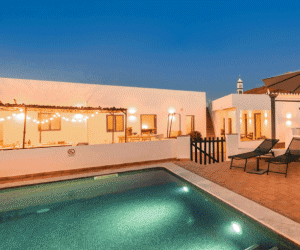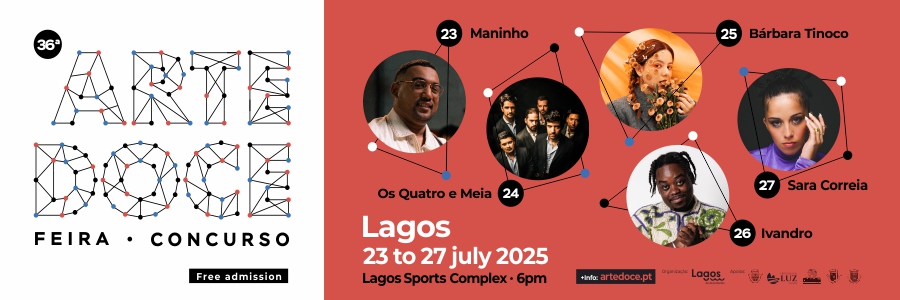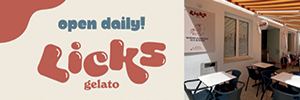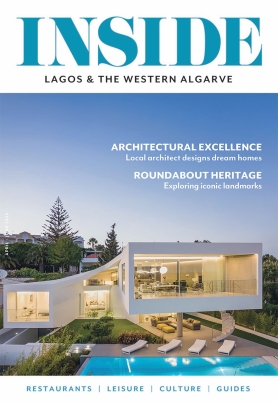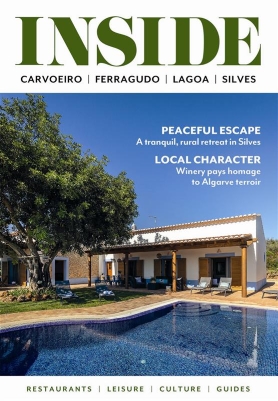THE TEMPO THEATRE IN PORTIMÃO PROVES THERE IS PLENTY OF CULTURE IN THE ALGARVE
Here at Inside, we were surprised at the amount of people who hadn’t heard of TEMPO, and those who had still weren’t quite sure where or what it was. It is, in fact, one of the best cultural offerings in the region, housed in a beautiful 18th-century landmark in Portimão.
TEMPO, or the Teatro Municipal de Portimão, opened in December 2008 as a cultural venue of excellence, staging a remarkable series of compelling music, theatre and dance programmes that have helped put the Algarve’s second city on the cultural map.
Housed in the former Sárrea Palace, opposite Largo 1 Dezembro near the riverside, it once served as the city’s law court. Today, however, it is a hot spot for the performing arts, with a programme that presents everything from plays, music and dance to film cycles, exhibitions, conferences and debates. “Above all, it is the city’s theatre, which works for the local community by playing an important role in boosting the city centre,” states Susana Martinho Lopes, production director at TEMPO.
Unfortunately, the recession has had a huge impact not only on local trade but also on cultural activities, and so, in the past few years, the theatre has had to reinvent its programme models which, at the moment, are almost exclusively made through partnerships where the profits are shared with the promoters and artists. “There has been a decrease in our audience who, for economic reasons, are pickier than ever when it comes to shows. Unfortunately, the less commercial shows are the ones that suffer the most,” explains Susana, who notes the much-needed support the theatre receives from various businesses and institutions, such as the Portimão Tourism Association and the Portimão Junta de Freguesia.
And so, thanks to the commitment and creativity of those behind the municipal theatre, today’s programmes are more diverse than ever, supporting more local artists and thus “proving that the theatre is a house of culture that is for everyone”, adds the production director.
Of course it helps that the building has an envious range of spaces, each with very distinctive features. The Grande Auditório, with a capacity for 440 people and featuring modern technical equipment, is the main venue for more complex performances, whilst the 165-capacity Pequeno Auditório is suited to conferences, talks and film screenings. Black Box is the smallest of the spaces, a more intimate room that allows greater proximity between the artists and the audience and where most of the educational shows and activities take place (the theatre’s Oficina do Espectador). The more informal Café Concerto is currently where the exhibitions take place and is a great little meeting point for a coffee, whilst the former exhibition room has become the Tourist Office. On the third floor is a rehearsal room for dance and theatre workshops, and this summer, the theatre opened its wonderful rooftop terrace, with unparalleled views over the river, for the unique After Work Sunset Sessions.
As well as its multiplicity of spaces and its central location at the top of Rua Direita, the theatre’s investment in high-quality lighting and sound equipment and a competent specialist team is essential. “Having a team responsible for the programme, production and technical maintenance represents a financial strain but it is vital for the space to have its own identity and keep running, to make this project socially viable.” Aiming to promote the arts to the wider community since its inception, the theatre’s programme is incredibly rich, comprising various genres and styles that they hope will appeal to people of all ages, backgrounds and nationalities. Having recently welcomed various photographic exhibitions from local artists, film screenings from international directors and classical music concerts, the programme over the Christmas season includes a performance of Swan Lake by the Russian Classical Ballet, a concert from famous Portuguese singer David Fonseca and a Christmas Concert performed by the Portimão Philharmonic Society. Amongst the big names to have graced the stage at TEMPO, including the likes of American jazz singers Dianne Reeves and, more recently, Stacey Kent, a particularly memorable event was the Invisible Cities Festival – Bridges of Istanbul. “In particular, the performance called Dervish by Turkish choreographer Ziya Azazy was one of the biggest successes in the history of TEMPO, with the Grande Auditório full and huge applause from a moved audience,” notes Susana.
Alongside the shows, the theatre also offers different initiatives, such as Valentine’s Day events, the After Work gatherings on Wednesday evenings and various corporate events, alongside a special educational service and its ongoing work with schools, families and senior citizens.
“Our ideal is to make people understand that culture is essential not only as a response to the recession, but above all to build our identity, our ability to question and reflect. We exist to contribute to the construction of better citizenship,” concludes the production director. “We have to keep the theatre alive.” To consult the programme, please visit www.teatromunicipaldeportimao.pt or find TEMPO on Facebook. Tel: 282 402 470

